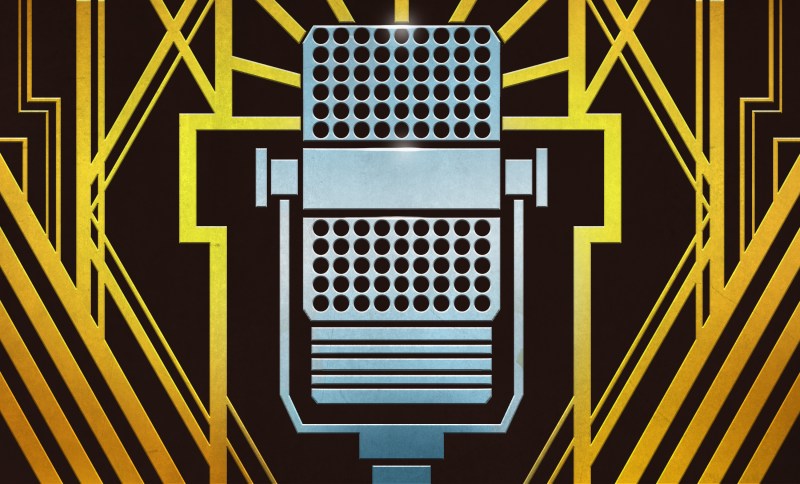We know you love the original art on Hackaday. Those fantastic illustrations are the work of Joe Kim, and he joins us as a guest on this week’s episode to talk about his background, what inspires him, and how he pulls it all off.
This episode is still packed with hacks. Editors Mike Szczys and Elliot Williams somehow stumble into two projects that end up generating hydrogen (despite that not being their purpose). But that art angle this week goes beyond Joe’s guest appearance as we look at a hack to add green curve tracing goodness on a black and white CRT, and an incredible take on a string art building machine. We get a look at interesting hardware that landed on the clearance rack, ultralight robots that move with flex PCB actuators, a throwback to mechanical computing, and giving up control of your home heating and cooling to a Raspberry Pi.
Links for all discussed on the show are found below. As always, join in the comments below as we’ll be watching those as we work on next week’s episode!
Take a look at the links below if you want to follow along, and as always, tell us what you think about this episode in the comments!
Direct download (60 MB or so.)
Episode 008 Show Notes:

New This Week:
- Litany of Conferences:
- This weekend Elliot Williams is at Make Munich Mar 2-3 in Munich, Germany
- This weekend Tom Nardi is at WOPR Summit Mar 1-3 in Atlantic City, NJ
- SCALE 17x (Southern California Linux Expo) is Mar 7-10 in Pasdena, CA. You’ll find Roger Cheng there
- There’s a bring-a-hack and Roger is exhibiting his scratch-built rover!
- VCF: Pacific Northwest is Mar 23-24 in Seattle, WA. Hackaday is a proud sponsor
- Cyphercon 4.0 is April 11-12 in Milwaukee, WI. You’ll find Mike Szczys there
- KiCon is April 26-27 in Chicago, IL. You’ll find a ton of people there including Anool Mahidharia an Kerry Scharfglass who are both giving talks.
- Audio equipment:
- Mike didn’t know the difference between TRRS and TRS, do you?
Interesting Hacks of the Week:
- What Happens When You Cross A Brick With A Pixel?
- Curve Tracing On Spray Painted CRTs
- Polar Platform Spins Out Intricate String Art Portraits
- Teach Computing The Old School Way With A DigiComp II
- Flexible PCB Robot Flops Around To Get Around
- Ten 3D Printed Gadgets That Just Can’t Stay Still
- We announced 10 contest winners, but there are other notable entries worth a look:
Quicklinks:
- Mike’s Picks:
- Elliot’s Picks:
Can’t-Miss Articles:
- Teardown: Applights Personalized Projection
- Hack My House: Raspberry Pi As A Touchscreen Thermostat
- Putting The Brakes On High Frequency Trading With Physics
An Interview with Joe Kim

- Browse Hackaday articles with Joe’s original art
- Studied at ArtCenter College of Design in Pasadena
- Mike is fixated on how Joe illustrates hands. Check out the Edison v Tesla illustration below (click to embiggen).
- Supercon Talk — Joe Kim: Where Technology and Art Collide
- Poster Illustrators:
- Screen Printed Movie Poster Subculture
- Find Joe Kim Online:
- Joe Kim Art (dot com)
- Transitory Obsession on Tumblr

















Finally managed to catch the podcast not long after the release :-)
It’s a shame that the podcasts don’t seem to get more love as there were a few tidbits that were mentioned that weren’t in the original article and were details that I’d missed so hearing the call-backs is handy.
On the I2C addressing, some devices allow the configuration pin to have 3 states (tie to +v, tie to 0v or leave open/nc) that way with two address selection pins you can actually get 9 different addresses which is quite a lot to avoid conflicts (but if that’s not enough, there’s always address translation chips – which I think HaD has covered in the past). An alternative to sharing the clock line with multiple data lines (not always an option with hardware I2C controllers) is using an I2C buffer/isolator/translators which, along with voltage translation, often have an enable pin or at least design examples that show how they can isolate one side of the bus from the other.